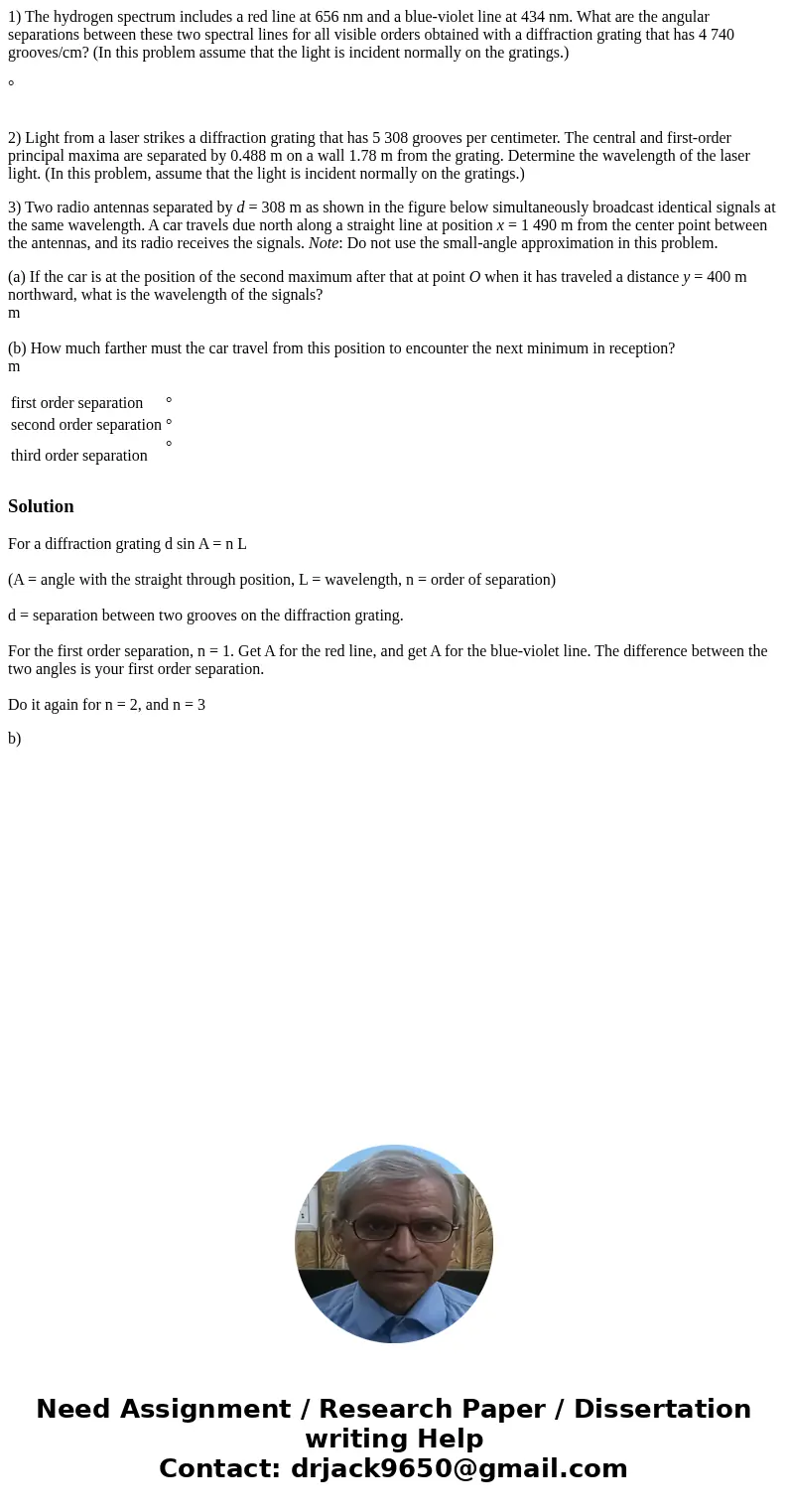1 The hydrogen spectrum includes a red line at 656 nm and a
1) The hydrogen spectrum includes a red line at 656 nm and a blue-violet line at 434 nm. What are the angular separations between these two spectral lines for all visible orders obtained with a diffraction grating that has 4 740 grooves/cm? (In this problem assume that the light is incident normally on the gratings.)
°
2) Light from a laser strikes a diffraction grating that has 5 308 grooves per centimeter. The central and first-order principal maxima are separated by 0.488 m on a wall 1.78 m from the grating. Determine the wavelength of the laser light. (In this problem, assume that the light is incident normally on the gratings.)
3) Two radio antennas separated by d = 308 m as shown in the figure below simultaneously broadcast identical signals at the same wavelength. A car travels due north along a straight line at position x = 1 490 m from the center point between the antennas, and its radio receives the signals. Note: Do not use the small-angle approximation in this problem.
(a) If the car is at the position of the second maximum after that at point O when it has traveled a distance y = 400 m northward, what is the wavelength of the signals?
m
(b) How much farther must the car travel from this position to encounter the next minimum in reception?
m
| first order separation | ° |
| second order separation | ° |
| third order separation | ° |
Solution
For a diffraction grating d sin A = n L
(A = angle with the straight through position, L = wavelength, n = order of separation)
d = separation between two grooves on the diffraction grating.
For the first order separation, n = 1. Get A for the red line, and get A for the blue-violet line. The difference between the two angles is your first order separation.
Do it again for n = 2, and n = 3
b)

 Homework Sourse
Homework Sourse